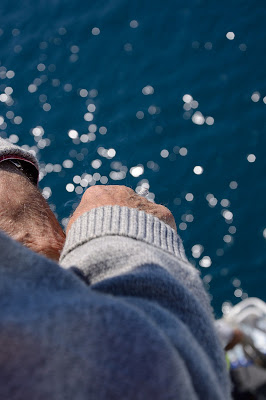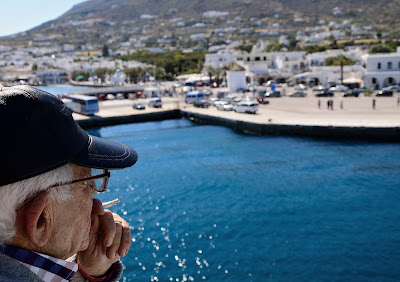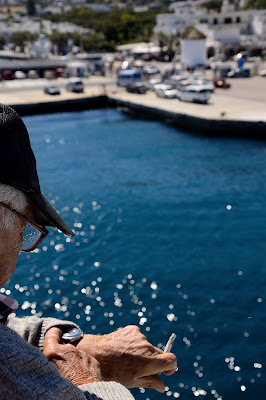Needless to say, this axiom proved once again the best recipe for great photos. I traveled with the Nikon D3200 and the Nikkor AF-S VR 18-105mm lens, and they were more than enough to give me all the pictures I envisioned.
Please pay attention to the word: envision
A good photographer sees a picture as s/he experiences the scene before his eyes.
A great photographer has already envisioned the picture before the scene has developed.
 |
| A great photo, but the story behind its making is more important |
The first lesson I want to share with you from my trip is about learning to anticipate in photography. That is, learning to envision a scene before it happens.
The best way to share this lesson with you is, of course, with two graspable examples. I'll take you through my thought process, accompanied with photos, to show you how a) you can learn to see an image in your mind before it happens; b) you can learn to anticipate what will happen next.
Case 1: The Old Man and the Sea
I was on the ferry en route to my destination. The ship had just arrived at another island - the beautiful Paros, in the Cyclades archipelago - and several people were on the deck, enjoying the surroundings. I noticed a... picturesque gentleman smoking and saw a picture there. | ||
| This is almost exactly the picture I saw, though its execution is unsuccessful |
 |
| This was not the original picture I envisioned, but an interesting attempt nevertheless |
I was somewhat satisfied with the image above, but I still wanted another shot at my original picture - that is, the picture I envisioned in my mind.
 |
| A variation |
Right after that, a surprise element added complexity: I noticed a young woman taking selfies right next to the old man. I vaguely saw the picture there, containing the opposite elements, and attempted a shot, but the framing was too difficult.
Finally, I realized I had to focus on my original idea. I positioned myself in a way that would give me the shot I wanted, hoping that the old man would take a couple more drags off his cigarette.
 |
| Finally, the shot I had envisioned |
It's not 100% perfect - I should go back to Photoshop and remove the hat brim on the top left corner - but it's close enough.
In the second part of this article, we'll take a look at the first photo - with the seagull soaring in the sunset - and the thought process that led to it. As an interim conclusion, remember:
- Focus on experiencing and seeing, not your equipment. The only function of your equipment is to let you take the picture your mind sees.
- Learn to see, learn to understand, experience, and enjoy the world around you. Translate images into emotions, and put them into your photography. This is called affect - take a look at this.
- Make sure you can react quickly to changing situations - no point trying to take pictures if your camera is buried at the bottom of a backpack. I'm using this, and I very highly recommend it.
- Learn to anticipate. This comes with experience and experiencing - the more attention you pay to the world around you, the better you become at understanding what will happen next. You better be there to take that shot.


No comments:
Post a Comment